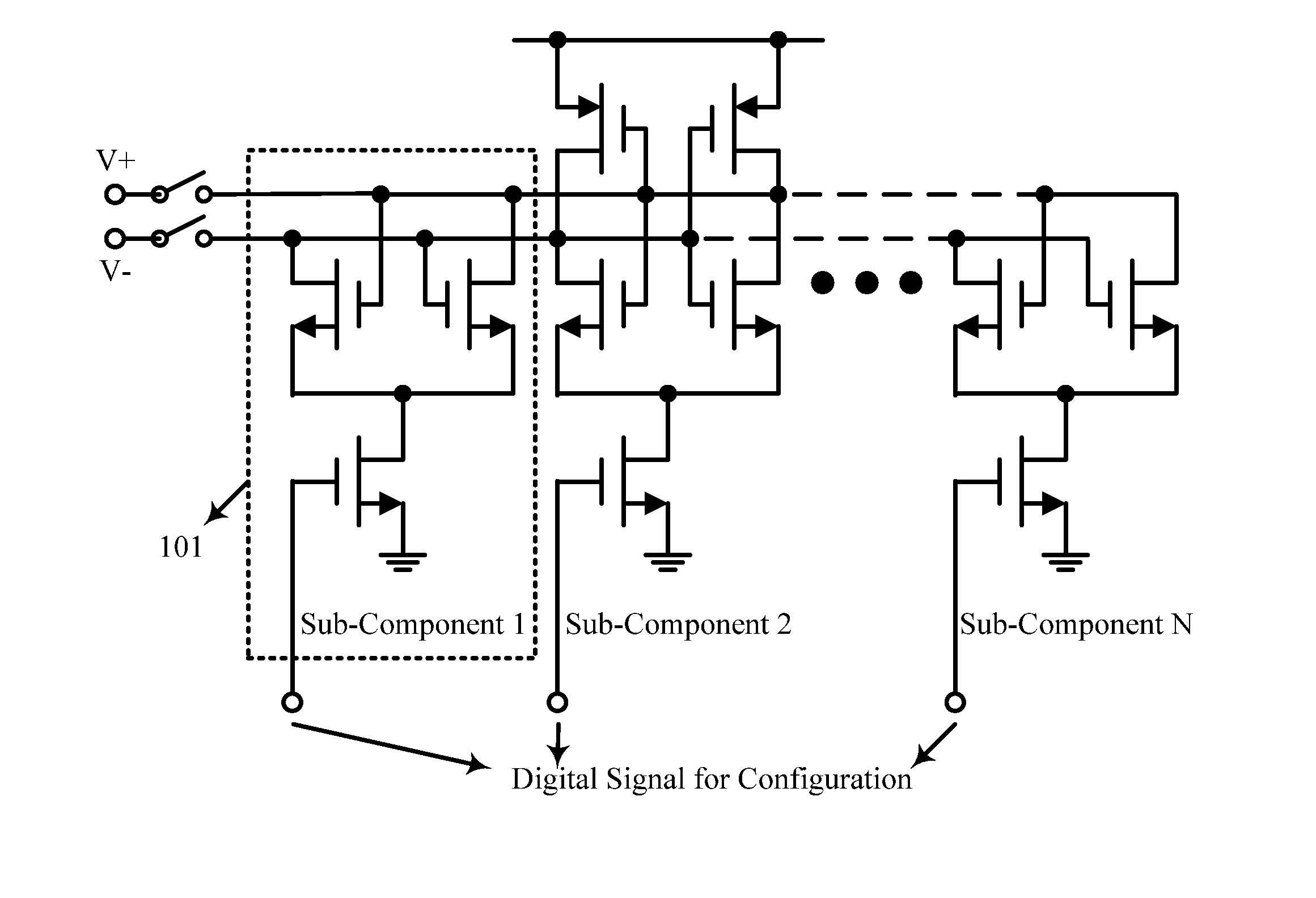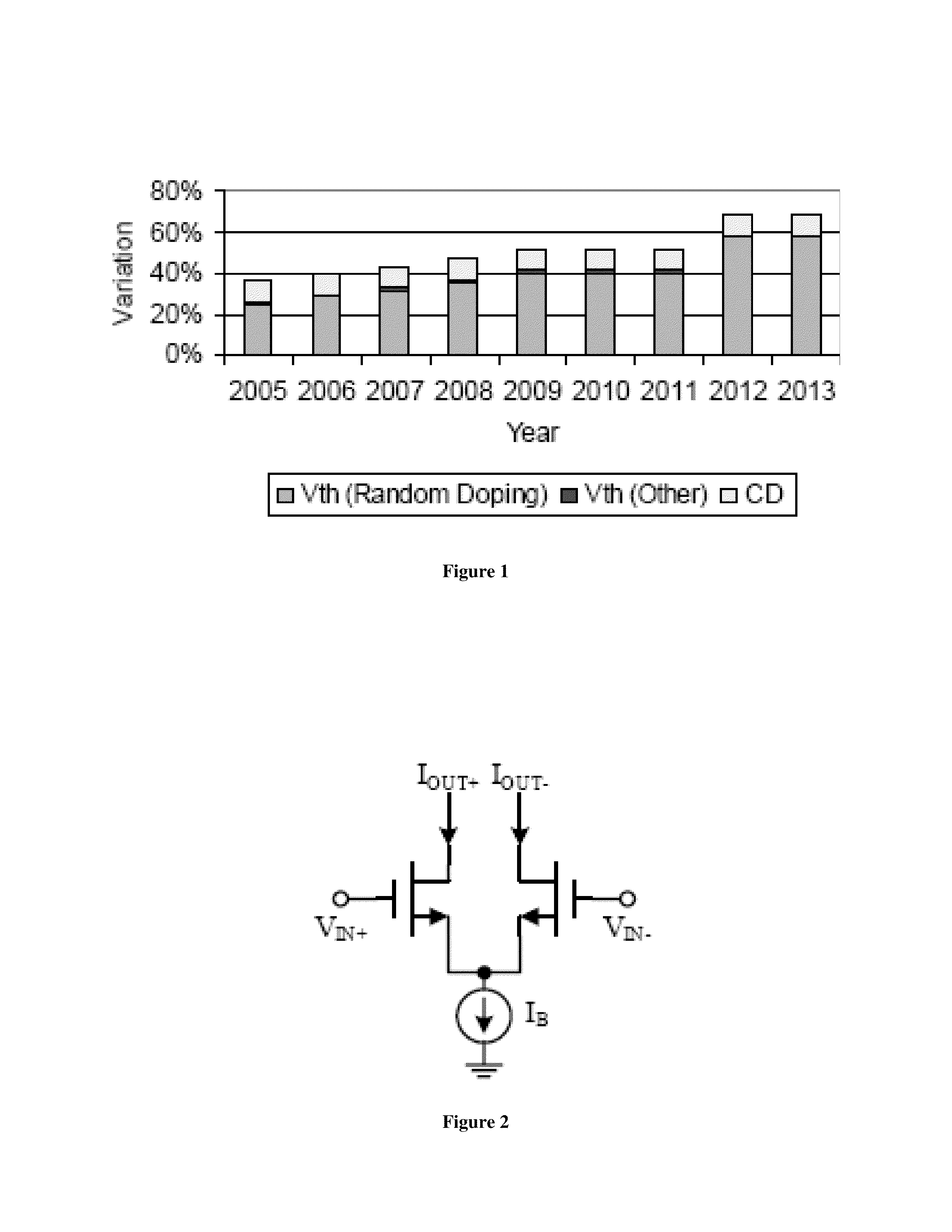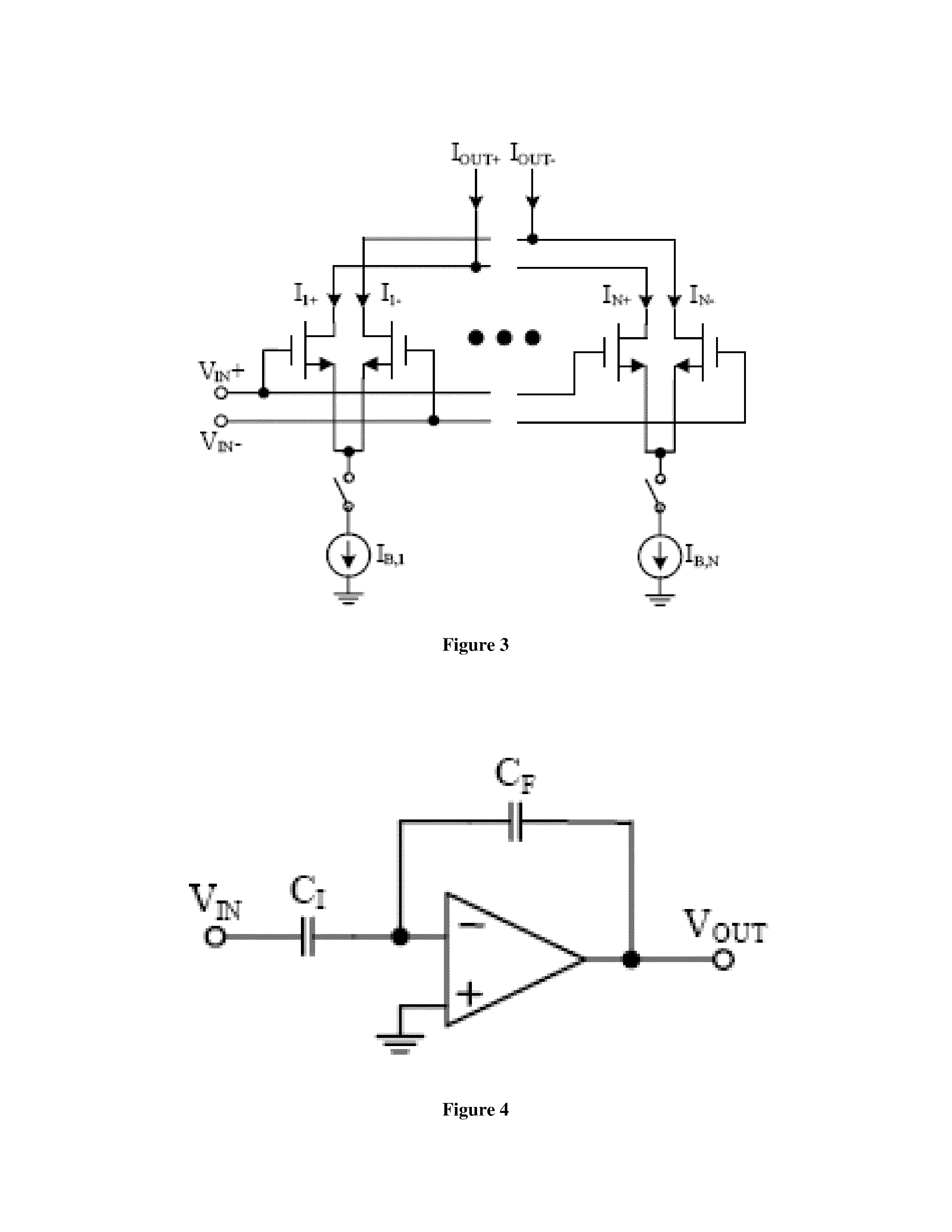Tunable integrated circuit design for nano-scale technologies
a nano-scale technology and integrated circuit technology, applied in the direction of discrete pre-tuned circuits, memory systems, electric pulse generators, etc., can solve the problems of high manufacturing cost, difficult, if not impossible, to create reliable, robust design over all process variations, etc., to facilitate robust integrated circuit design, reduce random mismatches, high-performance and reliable
- Summary
- Abstract
- Description
- Claims
- Application Information
AI Technical Summary
Benefits of technology
Problems solved by technology
Method used
Image
Examples
first embodiment
Tunable Integrated Circuit Design Containing Analog Devices
[0070]Two analog design examples (i.e., a differential transistor pair and a switched-capacitor amplifier) are used in this embodiment to illustrate the basic concept of the proposed adaptive post-silicon tuning. The following two circuit examples rely on transistor matching and capacitor matching, respectively. It should be noted, however, that the proposed post-silicon tuning methodology can be applied to many other analog applications where device matching is critical.
[0071]Shown in FIG. 2 is the simplified circuit schematic of a traditional differential transistor pair (see Background reference [23]). It utilizes the symmetric topology to make the performance insensitive to inter-die variations. However, random device mismatches make the circuit symmetric and, hence, introduce offset voltage. In general, the transistors of a differential pair must be sufficiently large so that the offset voltage can be minimized.
[0072]An...
second embodiment
Method for Tuning Circuit Design
[0183]This embodiment discloses a method for a method for use with a circuit, the circuit comprising first and second components, said first and second components disposed on a common semiconductor substrate, said first and second components originating from the same semiconductor-fabrication process, each said component defining an operational value capable of being measured post-fabrication, each said component comprising a respective number of respective sub-components, each of said sub-components contributing a fractional portion of the operational value of the respective component, each of said sub-components disposed to be operational or non-operational under configurable control, the operational value being a consequence of the aggregate of the sub-components, the method comprising the steps of: carrying out a plurality of post-fabrication measurements of the operational value for the first component, each post-fabrication measurement carried o...
third embodiment
Method of Use with an Analog Circuit
[0196]This embodiment discloses a method for use with a circuit, the circuit comprising a component, said component disposed on a semiconductor substrate, said component defining an operational value capable of being measured post-fabrication, said component comprising respective sub-components, said respective sub-components originating from the same semiconductor-fabrication process, each of said sub-components contributing a fractional portion of the operational value of said component, each of said sub-components disposed to be operational or non-operational under configurable control, the operational value being a consequence of the aggregate of the sub-components, the method comprising the steps of: carrying out a plurality of post-fabrication measurements of the operational value for said component; selecting a subset of said sub-components for said component, based upon its measured operational values; and configuring said selected sub-com...
PUM
 Login to View More
Login to View More Abstract
Description
Claims
Application Information
 Login to View More
Login to View More - R&D
- Intellectual Property
- Life Sciences
- Materials
- Tech Scout
- Unparalleled Data Quality
- Higher Quality Content
- 60% Fewer Hallucinations
Browse by: Latest US Patents, China's latest patents, Technical Efficacy Thesaurus, Application Domain, Technology Topic, Popular Technical Reports.
© 2025 PatSnap. All rights reserved.Legal|Privacy policy|Modern Slavery Act Transparency Statement|Sitemap|About US| Contact US: help@patsnap.com



